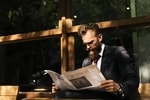
Will GoodRX Stock Bounce Back?
GoodRX (NASDAQ:GDRX) tracks prescription drug prices and its model was…


GoodRX (NASDAQ:GDRX) tracks prescription drug prices and its model was…

Freeport-McMoRan (NYSE:FCX) is among the world’s largest producers of copper…

Levi Strauss (NYSE:LEVI) is among the oldest clothing brands in…
Market Cap: $4.2T
P/E Ratio: 58x
Market Cap: $3.8T
P/E Ratio: 43x
Market Cap: $3.1T
P/E Ratio: 35x
SharpLink Gaming [SBET] is down 2.6% over the past day.
Exodus Movement [EXOD] is down 4.14% over the past day.
Unity Software [U] is up 7.51% over the past day.